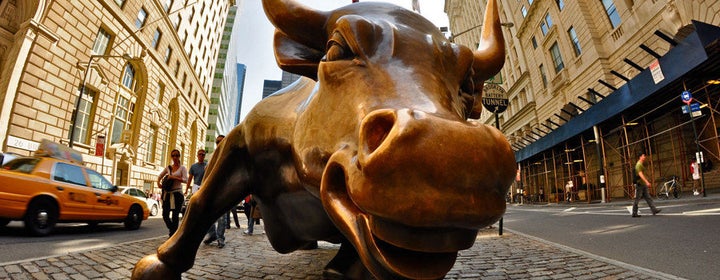
The problem with banks being too big to fail is not necessarily their bigness, but their failure. Like a runaway train plowing through a city block, a failing big bank can destroy everything around it.
If only there was a way to let a giant bank crash on its own without bothering anybody! Actually, it would be better to not have big banks at all. But it's anti-American to think that way. So the crafters of the Dodd-Frank financial reform act have tried to make it so that a failing big bank can be gently put to sleep while the rest of us get on with our lives, rather than panicking and shelling for a costly bailout.
The responsibility for keeping things running smoothly the next time a giant bank gets itself in a Lehman-like pickle rests in the hands of a government regulatory agency, the Federal Deposit Insurance Corporation, whose funding Congressional Republicans are trying to slash.
It is probably unrealistic to expect the plan to work, but to its credit, the agency is gamely trying to convince the market it is ready for the task.
At a speech on Thursday in Chicago, acting FDIC Chairman Martin Gruenberg laid out the regulator's plans for taking down a failing behemoth.
Essentially, the bank's holding company, the umbrella from which "hundreds, if not thousands" of subsidiary companies hang, would become a ward of the FDIC. Meanwhile, those subsidiaries, sprawled out all over the world, would go about their usual business: foreclosing on mortgages, collecting enormous checking-account fees, gambling on corn futures, etc.
Holders of the bank's stock would be wiped out to help cover the bank's debts, and bond holders would take some losses, too. This is what happens to smaller banks when they fail. It's a fate that investors in the too-big-to-fail banks haven't had to worry about much. They're sure the government is going to bail them out, just like it did before. The FDIC is trying to say that it's not going to happen next time.
Is the FDIC's message getting through? Arguably not. The big banks still likely have an easier time raising cash from investors because of implicit government backing, as TARP's inspector general Christy Romero noted recently.
"[U]ntil you do it," the FDIC's Gruenberg told the Wall Street Journal recently, meaning until you actually take down a big firm, "I'm not sure you're really persuading the market conclusively." As the WSJ's Victoria McGrane notes, there are lots of skeptics, including investors and academics, about the FDIC's ability to handle a big-bank meltdown.
Meanwhile, Dodd-Frank opponents in Congress -- including Rep. Paul Ryan (R-Wis.), who has himself argued that banks shouldn't be too big to fail -- are trying to strip the FDIC of its resolution power. They have already killed a provision of Dodd-Frank that would have made the biggest banks pony up $19 billion for a rainy-day fund that would provide necessary cash to keep a failed bank's subsidiaries running.
Instead, now the FDIC has to finance its Orderly Liquidation Fund with taxpayer money first, and then try to get the money back from profits of a failing bank. It also will have the right to try to pull money out of the other big banks after a failure has already happened, in what Rolling Stone's Matt Taibbi, in a new article on financial regulation Thursday, calls "an assessment process so convoluted that you could grow a four-foot beard in the time it would take to understand it."
What's more, as Taibbi points out, Republicans in Congress are also trying to kill even that assessment process, leaving taxpayers on the hook, just as they were before anybody had ever heard of Dodd-Frank.
Little wonder that investors, and angry taxpayers, still think the government is going to be right there to catch one of these big Baby Hueys the next time it takes a dive.